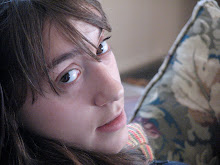So I'm reading Calvino's If on a winter's night a traveler once again, which has completely confirmed my thoughts on Calvino's influence on Orhan Pamuk (whose novel, The Black Book, I read earlier this summer). Both protagonists in If on a winter's night a traveler and The Black Book seek out their love of literature through the female characters they pursue. The Reader in Calvino's novel is obsessed with not only the books that are continuously disrupted, but Ludmilla, the Other Reader, and the way she experiences and enjoys the act of reading. Galip of The Black Book has a similar pursuit. He is absorbed by Celal's columns, and in his investigation finds himself to be very much like the characters in the detective novels his wife Ruya devours. Ludmilla and Ruya thus become a physical embodiment of literature. This is particularly the case when in If on a winter's night a traveler, the protagonist and Ludmilla have sex. The narrator compares the act of love to the act of reading (NOTE: this novel is mostly told in the second person),
"...now you are being read. Your body is being subjected to a systematic reading, through channels of tactile information, visual, olfactory, and not without some intervention of the taste buds" (155, If on a winter's night a traveler).
I think it's interesting that Calvino deconstructs a pretty carnal human experience. Sex becomes
an examination, as one would pick apart a piece of text.
The structure of these works are similar as well. Every other chapter the audience reads the actual text that the protagonists would be reading themselves, while the other chapters fill in the plot and courses of action the protagonists take in order to fit the pieces of the puzzle together. The reader becomes a tag along in these characters' literary explorations, finding that they themselves could be in Galip's case deconstructing, or in the Reader's, solely enjoying, the piece of literature at hand. Despite such similarities, I find Calvino and Orhan's progatonists at odds. Calvino's character reads for the sake of reading, throwing away analysis of the work and ignoring any "position with regard to Trends of Contemporary Thought and Problems that demand a Solution" (44, If on a winter's night a traveler. Calvino). In The Black Book, Galip looks to find symbols and hidden meanings in his cousin Celal's columns. Galip begins to look at the world and literature as being rich with "mystery and ambiguity" (304, The Black Book). Everything becomes a clue and he marks up the newspaper columns like a mad man.
At the end of The Black Book, Pamuk completely pulls a Calvino. The narrator switches gears and chooses to withdraw you from the story of the book, "that, dear reader, is why I would prefer to leave you alone on this page...this would allow you to use your own imaginations to create that which my prose can never hope to achieve" (443, The Black Book). Here we are being asked to become a more active reader. We must look at what is beyond the page and absorb ourselves in our own thoughts. Throughout If on a winter's night a traveler, Calvino's narrator does the same thing. He guides the Reader (the protagonist) through his interaction with him and speaks to him, but at times chooses to fade from the text. Calvino's descriptions withdraw the Reader from the narrator, "the author piles supposition on supposition in long paragraphs without dialogue, a thick, opaque layer of lead where I may pass unnoticed, disappear" (14, If on a winter's night a traveler).
Altogether, I find that each of these novels is "a bottomless well of stories inside stories inside stories" (177, The Black Book). The stories within these books bounce back and forth, meeting each other but quickly moving along their own path. I can't help but think of a Pynchon quotation from The Crying of Lot 49, the interaction between the stories is "a kiss of cosmic pool balls".
Monday, September 1, 2008
Subscribe to:
Post Comments (Atom)

No comments:
Post a Comment